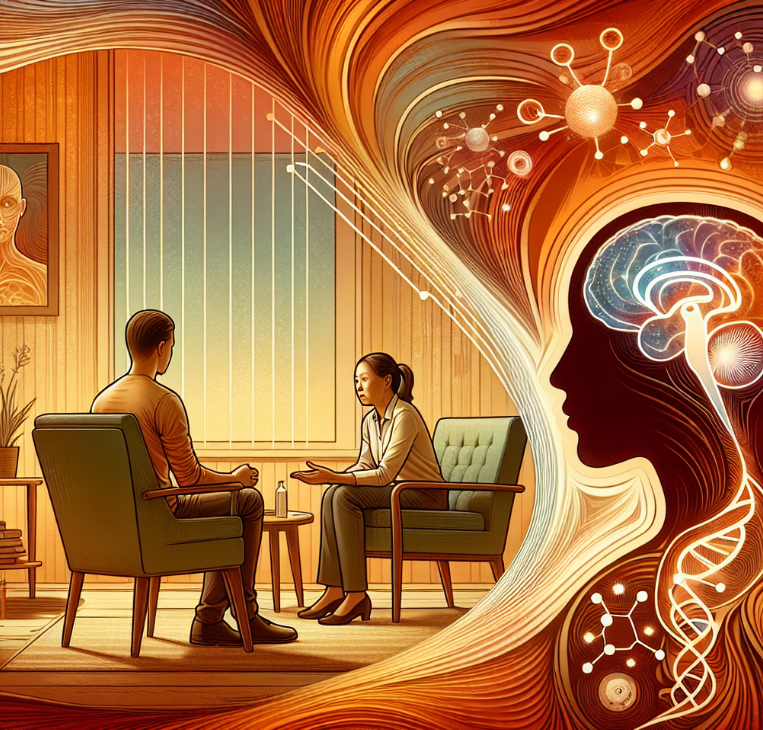December 30, 2024
Embarking on the path of self-discovery is an essential journey that leads to understanding one's true nature, encompassing thoughts, emotions, and desires. This journey is fundamental to personal development, offering insights that pave the way for a more fulfilled life. On a psychological level, self-discovery enhances mental health by fostering self-awareness, which aids in managing stress and improving emotional well-being. In Oakville, Ontario, cultural and societal influences significantly shape the self-discovery process. The town's diverse community provides a rich environment where individuals can explore their identities while navigating various cultural norms and expectations. The Role of Therapy in Self-Discovery Therapy stands as a powerful tool in the self-discovery process, offering a structured environment for individuals to explore their inner world . Different therapeutic approaches, such as psychotherapy, hypnotherapy, and EMDR, provide unique pathways to uncover hidden aspects of one's personality and desires. Through therapy, individuals can confront and understand their fears, motivations, and aspirations. Therapists often note that common challenges in this process include overcoming deep-seated fears and societal pressures, but with guidance, these obstacles can be surmounted. Techniques in Therapy Various techniques are employed in therapy to aid self-discovery. Psychotherapy encourages open dialogue, allowing individuals to verbalize their thoughts and feelings. Hypnotherapy explores the subconscious, revealing underlying issues that may not be accessible through conscious thought. EMDR (Eye Movement Desensitization and Reprocessing) is particularly effective in addressing trauma-related barriers to self-discovery. Art therapy offers a creative outlet for expression, helping individuals visualize and interpret their emotions. Pranic psychotherapy aligns energy with personal insights, fostering growth and self-awareness. Benefits of Uncovering the Authentic Self Uncovering one's authentic self brings numerous benefits. Personally, it leads to increased confidence, a clearer sense of purpose, and a stronger connection to one's emotions. It encourages self-acceptance, reducing stress and anxiety associated with trying to fit societal molds. Professionally, authenticity enhances decision-making, fosters genuine relationships, and builds trust in the workplace. Studies suggest that self-awareness is linked to improved emotional intelligence and leadership skills, making individuals more effective in both personal and professional settings. Embracing authenticity allows individuals to navigate life with integrity, aligning their actions with their core values and leading to a greater sense of fulfillment. Overcoming Barriers to Self-Discovery Despite its benefits, self-discovery is often hindered by barriers such as fear, societal expectations, and past trauma. Many individuals struggle with self-doubt, worrying about how they will be perceived if they embrace their true selves. Overcoming these obstacles requires intentional effort, self-compassion, and external support. Therapists play a vital role in this process, offering strategies to address fears and reframe limiting beliefs that may have been ingrained over time. A supportive environment, whether from family, friends, or community, is essential in fostering self-discovery and personal growth. In Oakville, community groups and local initiatives provide spaces for individuals to connect, share their journeys, and find encouragement in a judgment-free setting. Having access to these resources can make the self-discovery process feel less isolating and more empowering. Real-Life ChangesThrough Therapy Real-life examples underscore the transformative power of self-discovery through therapy. One client, who struggled with anxiety and low self-esteem, found clarity and confidence after exploring their fears in therapy. By identifying negative thought patterns and learning coping strategies, they were able to rebuild their self-worth and take control of their future. Another individual, feeling stuck in an unfulfilling career, realized their passion for art, leading to a career change that aligned with their true self and brought renewed motivation. Clients often express gratitude for the insights gained through therapy, highlighting the importance of professional support in their journey. These success stories demonstrate that uncovering one's authentic self is not only possible but also deeply rewarding, fostering a renewed sense of purpose and inner peace. Amytra Therapy's Unique Approach Amytra Therapy offers a unique approach to therapy, focusing on personalized care and holistic methods tailored to each client's needs. Their services cater to the specific needs of individuals in Oakville, recognizing the diverse cultural influences that shape self-discovery. By integrating traditional therapeutic techniques with mindfulness, cognitive behavioral strategies, and self-exploration exercises, Amytra Therapy helps clients achieve meaningful outcomes in their growth journey. Their compassionate and client-centered approach ensures that each individual receives the support necessary to overcome internal barriers and embrace their authentic self. The therapists at Amytra Therapy prioritize creating a safe, non-judgmental space where clients can explore their emotions and develop strategies for long-term well-being. Therapy as a Lifelong Tool Self-discovery is an ongoing process, not a one-time event. Therapy can be a lifelong tool for personal growth and self-awareness, helping individuals integrate new experiences and insights as they navigate life's changes. As people evolve, their values, priorities, and goals may shift, requiring continuous self-reflection and adjustment. Viewing self-discovery as an evolving journey encourages individuals to remain open to change, growth, and new possibilities. Therapy provides a structured space for this introspection, allowing individuals to develop resilience and adaptability. For those interested in pursuing self-discovery, resources such as guided self-reflection exercises, mindfulness practices, and books on self-awareness offer valuable insights and strategies to deepen their understanding of themselves. The Importance of Community in Self-Discovery In Oakville, the community plays a significant role in supporting self-discovery . Local groups and initiatives provide platforms for individuals to share their experiences, learn from others, and receive encouragement in their personal growth journeys. These community spaces foster a sense of belonging, which is essential for self-exploration and confidence-building. Engaging with the community can enhance the self-discovery process, offering opportunities for meaningful conversations, mentorship, and collective learning. Participating in workshops, support groups, or cultural events can expose individuals to new perspectives, helping them refine their understanding of who they are and what truly matters to them. The Impact of Cultural Influences Cultural influences in Oakville shape the self-discovery journey in unique ways. The town's diverse population brings together various cultural norms, traditions, and values, creating a dynamic environment for personal exploration. Individuals can draw from different cultural perspectives to enrich their understanding of themselves, gaining insight into how their heritage, upbringing, and social environment have shaped their identities. This multicultural setting encourages openness and acceptance, allowing individuals to embrace their authentic selves without fear of judgment. Recognizing and celebrating one's cultural background can be an integral part of self-discovery, helping individuals develop a strong sense of identity and belonging. Personal Growth and Professional Development Self-discovery not only impacts personal growth but also plays a crucial role in professional development. Understanding one's strengths, values, and passions can lead to more informed career choices, increased job satisfaction, and greater professional success. When individuals align their work with their values, they are more likely to feel motivated and engaged in their careers. Authenticity in the workplace fosters better communication, collaboration, and leadership, contributing to a positive work environment. Employers also value self-aware employees, as they tend to demonstrate higher emotional intelligence, adaptability, and resilience. By continuously exploring their authentic selves, individuals can create fulfilling professional paths that align with their aspirations and personal growth. The Journey Continues The journey of self-discovery is a continuous process that evolves with time and experience. As individuals grow and change, their understanding of themselves deepens, leading to new insights and perspectives. Embracing this journey with curiosity and openness allows for ongoing personal development. Therapy serves as a valuable companion on this path, offering guidance and support as individuals navigate the complexities of self-discovery. Self-discovery is a vital aspect of personal development, deeply intertwined with therapy. By understanding oneself, individuals can lead more authentic and fulfilling lives. Therapy transforms the journey of self-discovery into a guided exploration, unlocking the potential for profound personal growth. As individuals embrace their authentic selves, they can navigate life's challenges with confidence and integrity, creating a more meaningful and satisfying existence. For those seeking guidance on their self-discovery journey, our approach is tailored to meet the diverse needs of our clients, providing support and insight every step of the way. Reach out to Amytra Therapy today to begin your path to uncovering your authentic self.











